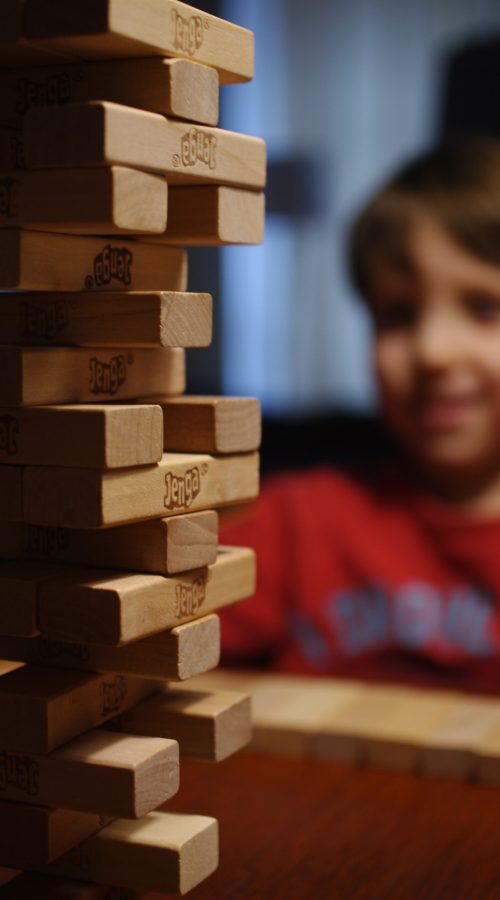We have just begun to perceive ‘sensitivity’ which no one can provide, but nature. It is due to this sensitivity that the child entering the second year of life becomes interested in tiny things. We can conceive that in this non-conscious age that child observes enthusiastically the environment and takes it in. And these sensitivities, among other tasks, guide the child to the acquisition of the determined faculties.
There is not only the sensitivity of the child towards the observation of the objects in the environment, but also towards the respective position of these objects in the environment. This attraction towards the position of the objects is so vehement that it can cause joy or distress. It is not a question of indifference as it would be with us. If I put a particular object here or there it is more or less the same. But it is a passionate question with the child.

I can cite here that fact which I have described in my book ‘The Secret of Childhood’, of a child walking with his mother. During the walk, the mother, finding the weather to be hot, removed her coat and kept it in her hand. The child began to cry inconsolably. The passersby who tried to console the crying child when unsuccessful, said – ‘this is not a child; this is a little devil!’ The mother, who had removed her coat, put it on and he calmed down instantly and smiled. Once calm, he said in his own language – ‘ the place for the coat is on your shoulders!’
E. M.Standing narrates a story of a little girl named Audrey (in his book – Maria Montessori: Her Life and Work), who came up to him carrying a large book with illustrations. She began turning pages till she came to a particular page and showed the picture of a man lying on the ground, who had obviously fallen off a horse, which was standing by the side, with bridle and empty saddle, waiting for his master to remount.
Audrey, pointing to the man, began to beat him with evident displeasure. Her mother was clueless about the child’s unusual interest in that picture which seemed to annoy her in some way. E.M. Standing took a pencil and drew in a man sitting on the saddle of the waiting horse. Audrey looked at the picture for a few moments and heaved a sigh of contentment and joy. Now the fallen man was back to where he belonged – on the horse. The child had earlier displayed similar displeasure when she saw a fashion advertisement of a hat without a face under it!

The adult’s love of order in his environment is of a different nature from that which possesses the soul of the small child; and springs from a different motive. We like to live in an orderly environment because it ministers to a sense of comfort in us and aids our efficiency. But the small child cannot live in disorder; order is for him a need of life; and if this order is upset it disturbs him greatly. His protests, which seem like mere caprices, are really vital acts of defence.

This passion for order in small children is manifested in certain of their games. In a game of hide and seek, the child goes and hides, say, behind a curtain. As you approach him, he squeals with joy, making no effort to conceal his presence. Also, time after time, he hides in the same place. ‘Now you hide’ he says, indicating the same hiding place. So you ‘hide’ there in your turn. Although he knows that you are hiding there, he will come and find you there with the greatest excitement. As adults, it seems to us to be an extremely futile sort of game. The important thing for the child here is not the hiding of the object, but seeing that it returns every time to its proper place and the joy of finding it there.
This passion for order in small children is manifested in certain of their games. In a game of hide and seek, the child goes and hides, say, behind a curtain. As you approach him, he squeals with joy, making no effort to conceal his presence. Also, time after time, he hides in the same place. ‘Now you hide’ he says, indicating the same hiding place. So you ‘hide’ there in your turn. Although he knows that you are hiding there, he will come and find you there with the greatest excitement. As adults, it seems to us to be an extremely futile sort of game. The important thing for the child here is not the hiding of the object, but seeing that it returns every time to its proper place and the joy of finding it there.
Both are due to that urge of the children, that passion, which we call sensitivity – a sensitivity towards ‘Order’ begins to reveal itself as the child reaches his second year and lasts for about two years. This comes at the same time as sensitivity to objects, small and big, visible and invisible and their relative position.
It is not a question of seeing. It is a question of loving.
– edited from Lecture No.9-13 Dec 1948, by Maria Montessori and
Maria Montessori – Her life and Work – by E. M. Standing.
Photo by Michał Parzuchowski on Unsplash
Photo by Aravind Kumar on Unsplash
Photo by Sharath Kumar Hari on Unsplash
Photo by Daiga Ellaby on Unsplash




